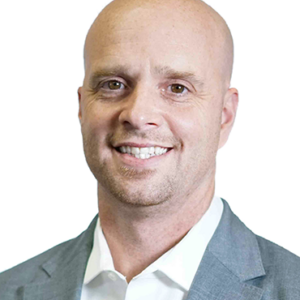This article originally appeared on the Rochester Business Journal with our own Gerald Archibald as a contributor, located here.
“Great is the art of beginning, but greater is the art of ending.”
— Henry Wadsworth Longfellow
The time has come to pass the torch to the next generation of Bonadio health and human service experts. After 251 columns published in the RBJ since 1996, I will continue my love of writing by completing five or more books that will focus on my most interesting experiences of the past 48 years in service to others. As a professional advisor, volunteer, philanthropist and classic car collector, I have experienced the best 50 years of American history! As the saying goes, life is a journey, not a destination, and I am ready, anxious and apprehensive to continue my journalistic journey in reaching a larger audience with my musings and experiences.
So, future RBJ columns will be authored by my most capable partner, Jeff Paille, who has agreed to accept the torch that has been passed to a new generation of thoughts and ideas.
I won’t be far away, as the RBJ has agreed to periodically publish an op-ed piece from me, if I have something interesting and relevant to say! And fret not — I will continue on the Ruth Bader Ginsburg retirement program, with the intention of moving more of my professional advisory time towards consulting projects.
Top 10 cost drivers and areas of focus for long-term success with value-based payments
Value-based payment (commonly referred to as VBP) is a concept that has been developing as a provider reimbursement/incentive mechanism for more than 40 years. There have been many iterations as to how VBP has been referred to, including performance-based reimbursement, achievement of performance targets and payments for desirable outcomes, among others. When New York state was awarded the Delivery System Reform Incentive Program (DSRIP), beginning in 2015 and ending on March 31, 2020, the state Medicaid director and the Department of Health developed a VBP Roadmap, readily available on the DOH website. If you are interested in furthering your knowledge of the rather dense VBP concepts, feel free to read the 80+ page document. However, in order to save the majority of you from a difficult three-hour read of the roadmap, I have developed the following Top 10 list that is an effective summary of the strategies and issues being addressed, to some extent, in the VBP contracting model between insurance companies and providers.
As you read the following, please keep in mind that VBP revenue is paid by the insurance company, also known as a managed care organization (MCO). It is also important to know that the amounts paid under VBP are intended to incentivize providers and the MCO to focus on preventive initiatives as well as improved service outcomes and service quality. Each and every board, management and supervisory staff member must understand and embrace the VBP construct. That is to say, generally your organization will receive somewhere between zero and 15% of its future revenue based on VBP “shared savings formulas,” intended to supplement what has been a healthcare delivery system based primarily on “fee for service encounters.” An example of fee for service revenue is your visit to any physician generating a co-pay as well as a per-visit fee billed by your physician to Medicare, Medicaid or one of the 25 health insurance companies in New York state. If I haven’t lost you yet with the description above, please read on.
- Personal accountability for every appropriate American citizen when it comes to maintaining health and wellness — and there needs to be REAL transparency of data and of costs AND patients need to have ownership and control over their data.
- Effective care coordination and case management for individuals with chronic, high cost health care conditions.
- Complete cooperation and collaboration, including cost and quality transparency, among all health and wellness providers, coupled with appropriate controls over duplication of services and competition that may increase community healthcare costs.
- Maximizing the benefit of integration between Social Determinant of Health (SDOH) providers (e.g., Salvation Army, Foodlink, etc.) with the spectrum of facility-based health and human service providers (e.g., health systems, physicians, ambulatory surgery centers), focusing on preventive and primary care initiatives that will reduce long-term costs for individuals with chronic conditions.
- Timely and reliable data analytics and the ability to translate data into actionable cost reduction initiatives.
- Develop meaningful regulatory and compliance reforms, with the objective of reducing the costs of administration and regulatory compliance, and increasing focus on cost-effective patient care.
- Extensive and broad implementation of telehealth and telemedicine service delivery approaches.
- Reducing fraud, waste and abuse, particularly in drug therapies and expenditures that have limited impact on patient quality of life.
- The cost and efficacy of beginning of life care.
- The cost and efficacy of end of life care.
The last two items are NOT within my purview but must continue to be addressed by bioethicists and health care experts in consultation with government payers (i.e., Medicare, Medicaid, VA, etc.) and health insurance companies.
Continuation of federal financial support for NYS Medicaid reform
Last month, the State Department of Health submitted a document known as a Section 1115 Concept Paper, which indicated the state’s intention to submit a $17 billion application for additional federal funding that would be used to build on the progress and achievements of the DSRIP program referred to above. This application will not be a renewal of DSRIP, but rather a conceptual design focused on continued integration of healthcare service providers, community based organizations (CBO) and SDOH providers. VBP contractual relationships are a fundamental concept that will continue if the federal government approves some or the entire request for federal funding. Interestingly, the new acronym referred to in the concept paper is HERO. HERO stands for Health Equity Regional Organization, a new regional structure unlike the 25 performing provider systems (PPS) that were established during the five-year DSRIP award. There will be seven regional HERO entities approved as described in the concept paper. The overall goal of the HERO structure is to “fully integrate social care and healthcare into the fabric of the New York state Medicaid program.”
If approved, the HERO model will establish a new governance structure providing CBOs and SDOH providers with a much greater voice in accomplishing the stated goal. Therefore, it is imperative that board, management and supervisory personnel must understand the goals of the regional HERO concept and, more importantly, support the main initiative of further collaboration and integration of provider service delivery while, at the same time, competing on service quality, outcomes and cost. With the foregoing in mind, each and every organization must begin to develop or enhance appropriate strategies to maximize the individual provider benefits that will be available if the 1115 Waiver award request is approved, most likely within the next six months.
The following Top 10 activities, excerpted from the 1115 Waiver Concept Paper, provide a road map for individual and regional networks of providers to effectively position their organizations for success under the HERO program.
- Assessing and identify local needs and health inequities by population, and service gaps;
- Establishing regional priorities based on local needs and specific populations;
- Ensuring racial, ethnic and gender concordance between patients and providers, so that providers resemble the patient population in order to facilitate patients’ desire to seek care;
- Developing other ways to address racial barriers that impact access to care;
- Ensuring that implicit bias training and awareness, as well as trauma-informed care is part of workforce training;
- Centralized data collection and exchange among a variety of sources, including national, state, local and proprietary (e.g., criminal justice, foster care, census data, etc.);
- Regional facility and delivery system planning;
- Identifying available local social services programming for the purposes of blending and braiding across funding streams and maximizing resources;
- Assessing existing housing inventory and identifying gaps where housing is needed; and
- Identifying housing solutions, including increasing the Supplemental Security Income (SSI) state supplement for high needs populations, addressing the supportive housing needs of individuals with serious mental illness (SMI) and other conditions requiring support to maintain housing, and other general housing solutions.
Our regional PPS, led by Carol Tegas, coordinated the 14-county Finger Lakes regional throughout the DSRIP five-year initiative. Carol and the team from Finger Lakes Performing Provider System (FLPPS) continue to work diligently on achieving further progress on efforts toward cost-effective integration of healthcare service delivery. It is important to note that FLPPS and our region’s healthcare providers achieved many of the best results throughout New York state in relation to the stated DSRIP goals and objectives. Kudos to all involved!
In closing this chapter of my journey, I must express my most sincere appreciation to the publishers and editors of the RBJ over the past 25 years. Each and every column that has been published is a representation of their receptivity to a wide variety of topics with virtually no editing other than correcting any grammatical errors. I will forever be most thankful for the extraordinary opportunities that have been afforded me by this outstanding publication and the people who produce it each week.
Many thanks to each of you as readers for your positive support and encouragement over the past 25 years.
This material has been prepared for general, informational purposes only and is not intended to provide, and should not be relied on for, tax, legal or accounting advice. Should you require any such advice, please contact us directly. The information contained herein does not create, and your review or use of the information does not constitute, an accountant-client relationship.



